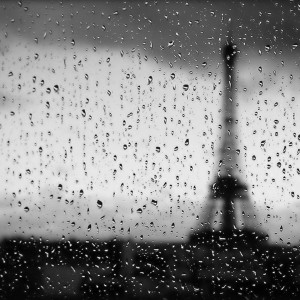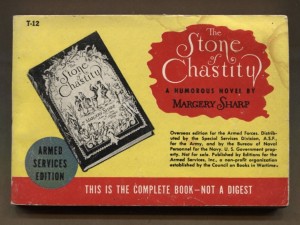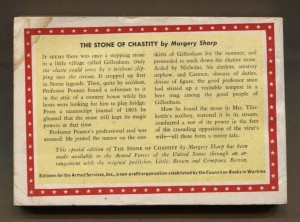Comfort Reads
In times of trouble I turn to comfort reading. You know what I mean — books where the problems are understandable, humans are mostly kind to one another and much is resolved over a nice cup of tea.
First, a few requirements, these comfort books must be well written, the stories well developed and the characters multidimensional. No insipid chick-lit or light romance for me (not that there’s anything wrong with that…).
In case you too, are feeling a bit down during these sad days, here are some suggestions. These are my favorite comfortable read authors… many of whom I keep on my shelves to re-read when I’m gloomy.
 Joanna Trollope writes sparklingly readable novels often centered around the nuances and dilemmas of life in present-day England. She is witty, with a truly acute ear for dialogue. Her novels are never long enough for me. I have read most all her novels — some more than once, because she makes me laugh, think and also sometimes groan, at the complexities of modern life. Her novels take modern life head on; divorce, errant children, flawed friendships and fallen expectations – but all woven with great human resilience. Recommended: A Village Affair
Joanna Trollope writes sparklingly readable novels often centered around the nuances and dilemmas of life in present-day England. She is witty, with a truly acute ear for dialogue. Her novels are never long enough for me. I have read most all her novels — some more than once, because she makes me laugh, think and also sometimes groan, at the complexities of modern life. Her novels take modern life head on; divorce, errant children, flawed friendships and fallen expectations – but all woven with great human resilience. Recommended: A Village Affair
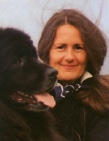 Marcia Willett is a veddy veddy English author. Her settings are a major pleasure in reading her books — cottages or large manor homes in the English countryside. Her plots revolve around the emotional pull of families and friends. Her characters are always interesting. The families are complicated, but loved. Friends are irritating, but cherished. Secrets are revealed in aga-heated kitchens with a pot of tea and fresh baked crumpets. Recommended: A Week in Winter
Marcia Willett is a veddy veddy English author. Her settings are a major pleasure in reading her books — cottages or large manor homes in the English countryside. Her plots revolve around the emotional pull of families and friends. Her characters are always interesting. The families are complicated, but loved. Friends are irritating, but cherished. Secrets are revealed in aga-heated kitchens with a pot of tea and fresh baked crumpets. Recommended: A Week in Winter
 I’ve mentioned Bill Bryson before here at Book Barmy, but I turn to him to cheer me up as I snicker, snort and laugh out loud at his writing. My favorite are his wonderfully descriptive travel books – from hiking the Appalachian Trail to traveling in middle American. Mr. Bryson is a smart writer who has a knack of seeing the wry humor in just about everything. He is also a traveler’s travel writer — not content to follow well-worn tourist locations, but instead visits the obscure and calls out the wacky with often hysterical results. Recommended: Neither Here Nor There
I’ve mentioned Bill Bryson before here at Book Barmy, but I turn to him to cheer me up as I snicker, snort and laugh out loud at his writing. My favorite are his wonderfully descriptive travel books – from hiking the Appalachian Trail to traveling in middle American. Mr. Bryson is a smart writer who has a knack of seeing the wry humor in just about everything. He is also a traveler’s travel writer — not content to follow well-worn tourist locations, but instead visits the obscure and calls out the wacky with often hysterical results. Recommended: Neither Here Nor There
 Elizabeth Berg. A recent author discovery for me. I found a book of hers in one of those little free libraries up in Lake Tahoe. Opened the book that evening and fell in headfirst, finishing it the next evening. When I came home, I discovered I had several of her books languishing on my shelves, given to me by friends and my sister. I had shied away, categorizing her as “woman’s lit”, which I often find trying. But based on my good experience, I read through another one (sending it on to you Connie) and am almost through a third. I wholly agree with Andre Dubus who said “Berg writes with humor and a big heart about resilience, loneliness, love, and hope. And the transcendence that redeems.” Woman’s lit, certainly, but with intelligence, depth and heavenly writing. Recommended: The Year of Pleasures.
Elizabeth Berg. A recent author discovery for me. I found a book of hers in one of those little free libraries up in Lake Tahoe. Opened the book that evening and fell in headfirst, finishing it the next evening. When I came home, I discovered I had several of her books languishing on my shelves, given to me by friends and my sister. I had shied away, categorizing her as “woman’s lit”, which I often find trying. But based on my good experience, I read through another one (sending it on to you Connie) and am almost through a third. I wholly agree with Andre Dubus who said “Berg writes with humor and a big heart about resilience, loneliness, love, and hope. And the transcendence that redeems.” Woman’s lit, certainly, but with intelligence, depth and heavenly writing. Recommended: The Year of Pleasures.
+++++++++++++++++++++++++++++++++++
So, maybe it’s time to turn off the news, pull the curtains, light a fire in the fireplace, grab your favorite afghan and cuddle in with one of these comfort reads. Shut the world away for a bit.
When Books Went to War by Molly Guptill Manning
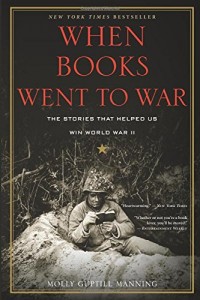 Unlike my previous post, where I talked about books that didn’t meet my expectations, this book totally surprised me.
Unlike my previous post, where I talked about books that didn’t meet my expectations, this book totally surprised me.
I picked up When Books Went to War as a gift for my mother (sorry Mom, now you know…) and thought I’d have no interest in reading it. Mom reads more history than I do, especially WWII which she experienced as a young girl on the home front.
One evening, cuddled into my reading nook, I idly picked it up and started skimming – still thinking it wouldn’t appeal. But before I knew it, I was several chapters in, fascinated by the idea, creation, distribution and importance of Armed Services Editions (ASEs) paperback books.
The idea was conceived by a wartime government entity- delightfully named The Council on Books in Wartime. Their slogan was “Books are weapons in the war of ideas”. Prior to this, private citizens were asked to donate books for the troops, but the effort proved disastrous as citizens unloaded books they didn’t want. Additionally, this was before paperbacks had been fully embraced by either the publishers or the reading public. The many donated hard backs proved unwieldy for use other than in military hospital libraries or training facilities. No one had figured out how to print small, lightweight books that could be carried by infantry soldiers into the battle trenches.
When Books Went to War tells the fascinating story of how a few publishers employed the Reader Digest magazine printers to produce these small and invaluable volumes. I learned how they used the two-up method — where two books were printed on one page. Because of this, printers staff had the tedious job of counting pages, words and characters in order to match similarly sized books. Given paper rationing, every page was used and an initial run had the typeface so small, they were impossible to read. But after these few initial failures – the ASEs were born.
The book is interspersed with letters from the soldiers at the front – there’s a brilliant description of the daily rigors of an infantryman to letters of thanks from soldiers who eagerly awaited the ASEs.
I want to say thanks a million for one of the best deals in the Army – your Armed Services Editions. Whenever we get them they are as welcome as a letter from home. They are as popular as pin-up girls – especially over here where we just couldn’t get books so easily, if it weren’t for your edition.
Private W.R.W and the Gang
The best chapter in the book is called Grab a Book, Joe and Keep Goin’. The chapter title refers to the rule that when the books arrived, and the soldiers lined up the pick out a book, they had to just pick one and quickly move on. They would trade them around later. This was to facilitate the very long ASE lines — much longer than the line for cigarettes. These books filled many long lonely hours for soldiers.
There are many delightful tidbits – who would guess that A Tree Grows in Brooklyn was the most popular ASE? And that hundreds of tough soldiers in foxholes wrote thank you letters to author Betty Smith (she answered every one). Like me, you may choke up to learn that when men had to jettison items from their packs to save weight, they never discarded their books.
Towards the end of the war and after, the US continued to distribute these books to both to servicemen and, later, to European civilians who were starved for reading material. The appendix lists just a fraction of the banned authors who books were banned and burned in Germany and German-occupied countries during the war.
The other appendix of this book is so fascinating I may have to keep this book (only kidding, Mom) as it lists every ASE published in date order, by series (A-B-C etc.) and issued number. Classics, short stories, humor, essays, now-forgotten popular authors, many sports books and even a few science and mathematics books show up. Nothing dumbed-down here. Would it be the same today, if there were a similar program? To read through this listing of titles is a wonderful glimpse into the reading and publishing tastes of the time. Not to mention, some of the ASE authors are the same as those on the banned book list.
When Books Went to War is an important cultural history; but it is also vastly readable, interesting and well researched.
If you love books, are interested in World War II and want to remember a time when Americans (and government) worked together for a common goal, read this book.
I wanted to see what an ASE looked like – here’s what I found for sale on Ebay. Click to see full-size.
Abandoned Books…
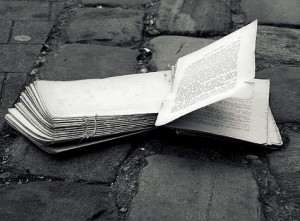 Abandoned books? I know, appalling for someone who’s barmy about books. But I admit it, I sometimes don’t finish books – even those well-reviewed best sellers thrust upon me by bookish friends or praised by other book bloggers. And it’s happening more and more often as I get older — you know the so little time, so many books theory. The 50 page rule prevails — I’ll give any book at least 50 pages before I put it down…sometimes more. This cold rejection of an author’s herculean effort always tears me apart a little bit. But, I’ve been told I’m too sensitive. So I’ll just pull up my big girl panties and give you a rundown of the books I’ve abandoned recently.
Abandoned books? I know, appalling for someone who’s barmy about books. But I admit it, I sometimes don’t finish books – even those well-reviewed best sellers thrust upon me by bookish friends or praised by other book bloggers. And it’s happening more and more often as I get older — you know the so little time, so many books theory. The 50 page rule prevails — I’ll give any book at least 50 pages before I put it down…sometimes more. This cold rejection of an author’s herculean effort always tears me apart a little bit. But, I’ve been told I’m too sensitive. So I’ll just pull up my big girl panties and give you a rundown of the books I’ve abandoned recently.
+++++++++++++++++++++++++++++++++++++++++
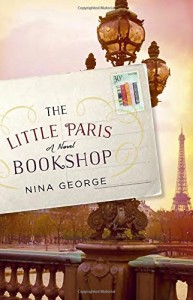 The Little Paris Bookshop: This just seemed the perfect book for me. What’s not to embrace? A bookshop on a boat — in Paris — and just look at that cover. But I found it just too whimsical and sticky-sweet. I struggled on, actually reaching chapter 28 – as the bookshop owner pilots his boat away from its long-time berth in Paris. But, just as the bookshop/boat meanders down the Seine, so too the plot – to the point where I practically fell into a sugar-laced coma.
The Little Paris Bookshop: This just seemed the perfect book for me. What’s not to embrace? A bookshop on a boat — in Paris — and just look at that cover. But I found it just too whimsical and sticky-sweet. I struggled on, actually reaching chapter 28 – as the bookshop owner pilots his boat away from its long-time berth in Paris. But, just as the bookshop/boat meanders down the Seine, so too the plot – to the point where I practically fell into a sugar-laced coma.
+++++++++++++++++++++++++++++++++++++++++++++
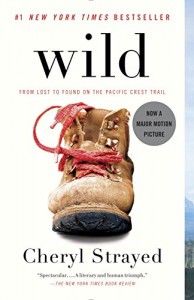 I eagerly opened Wild wanting the adventure it advertised, a broken hearted woman sets off, totally unprepared, to hike the Pacific Coast Trail. I read ten chapters into this one, but I found her grief unbelievably extreme, so raw she seemed broken beyond what a hike (or sex along the way) could solve. Her lack of emotional maturity, simply put — bored me. N.B. The author has written the complete opposite of a book, Dear Sugar which I am dipping into and so far, I’m very moved by it, so stay tuned.
I eagerly opened Wild wanting the adventure it advertised, a broken hearted woman sets off, totally unprepared, to hike the Pacific Coast Trail. I read ten chapters into this one, but I found her grief unbelievably extreme, so raw she seemed broken beyond what a hike (or sex along the way) could solve. Her lack of emotional maturity, simply put — bored me. N.B. The author has written the complete opposite of a book, Dear Sugar which I am dipping into and so far, I’m very moved by it, so stay tuned.
+++++++++++++++++++++++++++++++++++++++++++
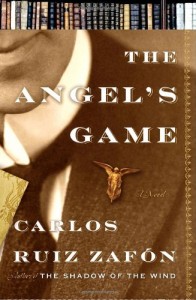 I place Carlos Ruiz Zafon’s first book The Shadow of the Wind on my list of all time favorite books. Set in a Barcelona bookstore with many secrets, I lost myself in that novel for many days. So, I had expectations that the second book in this series – The Angel’s Game – would carry on the magic. But this book is dark and very different with weird supernatural elements. I read through pages of violence and disturbing psychological ugliness. It seemed the author was angry with this writing – as he punches the reader with unresolved hard truths and unflinching observations. In the end, what made me quit reading, was the many, many characters (and some with multiple personae) — I just got plain confused. I was never sure what was going on in the convoluted story line and kept having to flip back and forth to see if I could figure out which character was which. So with a slight headache, I took an aspirin and went to bed without a backward glance.
I place Carlos Ruiz Zafon’s first book The Shadow of the Wind on my list of all time favorite books. Set in a Barcelona bookstore with many secrets, I lost myself in that novel for many days. So, I had expectations that the second book in this series – The Angel’s Game – would carry on the magic. But this book is dark and very different with weird supernatural elements. I read through pages of violence and disturbing psychological ugliness. It seemed the author was angry with this writing – as he punches the reader with unresolved hard truths and unflinching observations. In the end, what made me quit reading, was the many, many characters (and some with multiple personae) — I just got plain confused. I was never sure what was going on in the convoluted story line and kept having to flip back and forth to see if I could figure out which character was which. So with a slight headache, I took an aspirin and went to bed without a backward glance.
+++++++++++++++++++++++++++++++++++++++++++
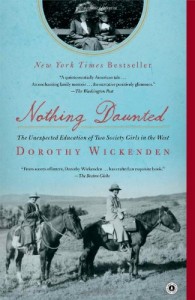 I’ve had Nothing Daunted for several years now and keep doggedly trying to get through it. Just read this blurb:
I’ve had Nothing Daunted for several years now and keep doggedly trying to get through it. Just read this blurb:
The acclaimed and captivating true story of two restless society girls who left their affluent lives to “rough it” as teachers in the wilds of Colorado in 1916.
The reviews were wonderful, I was hearing about this book everywhere. And you got to love the cover, with before and after photos of the actual subjects? The introduction is just as enticing, as the author describes coming across a folder of her mother’s forgotten letters from this adventurous time in Colorado. The author has penned an historical work, which is comprehensive, but not compelling enough to keep this reader enthralled. The landscape of the area and time period are well written. But there is no emotion written into this account and the characters are one-dimensional. The author had to obviously imagine parts of the story, why not insert some emotions as well? Sadly, as exciting as these two women’s personal experiences must have been – their story suffers from a dull and dry telling. Like ordering a beautifully described, but disappointing meal in a restaurant, I finally gave up and put it aside unfinished.
++++++++++++++++++++++++++++++++++++++++
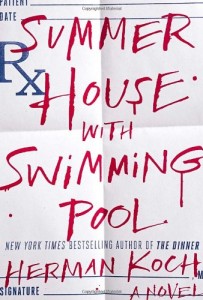 I read The Dinner by Dutch writer Herman Koch, when it was a bestseller. It’s a masterfully crafted psychological novel with the evil incident revealing itself largely by dialogue around a restaurant dinner. (Read it – it will grab you and not let you go.) So, once again I had expectations of a similar read with his second book Summer House with Swimming Pool. What happened to Mr. Koch’s writing? Where is his craft? This book, written entirely in the third person, lacked any plot as of five chapters in and the main character, whose revolting thoughts and dreary ramblings we must endure, is entirely unlikable. With The Dinner, the reader could relate and even empathize with the protective parents. This follow-up has none of that soul or depth. It is almost as if Mr. Koch dusted off one of his earlier writing attempts and the publisher ran with it.
I read The Dinner by Dutch writer Herman Koch, when it was a bestseller. It’s a masterfully crafted psychological novel with the evil incident revealing itself largely by dialogue around a restaurant dinner. (Read it – it will grab you and not let you go.) So, once again I had expectations of a similar read with his second book Summer House with Swimming Pool. What happened to Mr. Koch’s writing? Where is his craft? This book, written entirely in the third person, lacked any plot as of five chapters in and the main character, whose revolting thoughts and dreary ramblings we must endure, is entirely unlikable. With The Dinner, the reader could relate and even empathize with the protective parents. This follow-up has none of that soul or depth. It is almost as if Mr. Koch dusted off one of his earlier writing attempts and the publisher ran with it.
++++++++++++++++++++++++++++++++++++++++++++
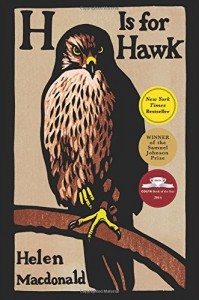 I had great hope for this glowingly reviewed memoir wherein a woman adopts and trains a Goshawk for falconry. (I had my own, albeit limited, experience helping injured hawks back to the wild — but that’s another post). Mabel, the hawk and her training is said to be a remedy for the death of her father, but that connection is never fully developed or understood. Why a mean-spirited hawk – why not a kitten or a dog? Ms. MacDonald started to loose me as she details her poor raptor’s “training” in a tiny apartment with some less than humane activities. H is for Hawk has some beautiful writing, especially when Mable’s training moves out into the open British countryside. But, I set the book aside and let it gather dust when Ms. MacDonald’s writing became tedious over her obsession with the deceased author (and even more heartless falconer) T.H. White.
I had great hope for this glowingly reviewed memoir wherein a woman adopts and trains a Goshawk for falconry. (I had my own, albeit limited, experience helping injured hawks back to the wild — but that’s another post). Mabel, the hawk and her training is said to be a remedy for the death of her father, but that connection is never fully developed or understood. Why a mean-spirited hawk – why not a kitten or a dog? Ms. MacDonald started to loose me as she details her poor raptor’s “training” in a tiny apartment with some less than humane activities. H is for Hawk has some beautiful writing, especially when Mable’s training moves out into the open British countryside. But, I set the book aside and let it gather dust when Ms. MacDonald’s writing became tedious over her obsession with the deceased author (and even more heartless falconer) T.H. White.
++++++++++++++++++++++++++++++++++++++++++++++
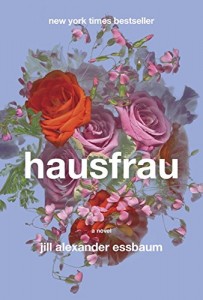 I loaded Hausfrau onto my Kindle for our trip to Switzerland, as it takes place in and around Zurich. So I settled in to read about a bored ex-pat housewife coping with a new culture as I traveled through the same country. Anna is privileged, bored and frustrated. She takes no interest in her husband or his work. Her mother-in-law cares for her house and children. Anna (even after 9 years) hasn’t bothered to learn the language or tried to assimilate. She can find no redeeming qualities in the Swiss culture or people. So naturally, she turns to meaningless sex with a series of English-speaking men. (Even the sex scenes were boring). An Anna Karenina character, but without class. That’s when I closed the book — but only after I’d mentally slapped her.
I loaded Hausfrau onto my Kindle for our trip to Switzerland, as it takes place in and around Zurich. So I settled in to read about a bored ex-pat housewife coping with a new culture as I traveled through the same country. Anna is privileged, bored and frustrated. She takes no interest in her husband or his work. Her mother-in-law cares for her house and children. Anna (even after 9 years) hasn’t bothered to learn the language or tried to assimilate. She can find no redeeming qualities in the Swiss culture or people. So naturally, she turns to meaningless sex with a series of English-speaking men. (Even the sex scenes were boring). An Anna Karenina character, but without class. That’s when I closed the book — but only after I’d mentally slapped her.
+++++++++++++++++++++++++++++++++++++++++
There you go, my pile of abandoned books, most of which were gladly donated to the library. Let them find a reader who will appreciate them and give them rave reviews.
Not to worry, I’m into some great reading with nothing abandoned for now.
What books could you not finish?
The People in the Photo by Hélène Gestern
 My branch library is only a few blocks away, which makes it a key destination whether I’ve gone walking on the beach or biked over to the produce market. Did I mention that my branch is newly renovated with a view of the ocean and huge windows that let the sun stream through?
My branch library is only a few blocks away, which makes it a key destination whether I’ve gone walking on the beach or biked over to the produce market. Did I mention that my branch is newly renovated with a view of the ocean and huge windows that let the sun stream through?
Like a good bookstore, I can’t seem to pass by without popping in see what’s on the new arrivals shelf. I have a miniature library card on my key ring in preparation for any serendipitous book finds.
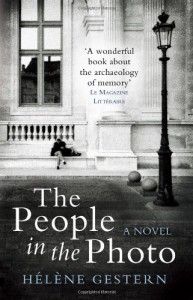 The People in the Photo was just such a find. The cover drew me in and the book was on it’s way home with me after this blurb:
The People in the Photo was just such a find. The cover drew me in and the book was on it’s way home with me after this blurb:
The chance discovery of a newspaper image from 1971 sets two people on the path to learning the disturbing truth about their parents’ pasts.
Parisian archivist Hélène takes out a newspaper advert calling for information about her mother, who died when she was three, and the two men pictured with her in a photograph taken at a tennis tournament at Interlaken in 1971. Stéphane, a Swiss biologist living in Kent, responds: his father is one of the people in the photo. Letters and more photos pass between them as they embark on a journey to uncover the truth their parents kept from them.
Epistolary novels are one of my favorite literary genres, but it’s a difficult writing style to pull off. Often it can be gimmicky, but when done well — riveting. Hélène Gestern has achieved the latter, all the more impressive as a translated French novel.
The story unfolds in a mixture of letters, emails and texts between Hélène and Stéphane as they uncover and exchange photos and revelations about their respective parents.
The characters evolve, as does their relationship, through their correspondence. At first they are reserved and cautious which we discover is due in large part to the secrets and unresolved feelings of their childhoods. But as they uncover new family histories, they also begin to share their feelings and soon develop a relationship they both believe will save them. But, perhaps, these discoveries are revealing a truth they don’t want to accept…
This is a quick read – not only because of its page-turning story line, but many pages contain only a short email or text. When I turned the last page of The People in the Photo, I turned back to the beginning to re-read parts of it again. I wanted to revel in the craft of the author – how carefully the characters are developed, the teasing bits of secrets revealed and the import of each piece of correspondence. In the end, I reluctantly returned this engaging novel to the library — but its impression remains.
Nature of the Beast by Louise Penny
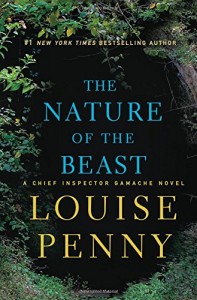 You may remember my previous post when I went to see Louise Penny at a local author appearance…and came away with a big author crush and her newest book, signed.
You may remember my previous post when I went to see Louise Penny at a local author appearance…and came away with a big author crush and her newest book, signed.
She gave a wonderful talk, answered questions (Myrna and her bookstore actually exist in Ms. Penny’s own village) and charmed everyone in attendance.
The next evening I made myself some bedtime tea and tore right in. Two nights later I closed the book and pondered these last two books —Long Way Home and this latest one.
Ms. Penny is clearly taking Gamache into a new direction. His life, after all, has changed. He is retired from the Sûreté and settled with his wife in the bucolic village of Three Pines. Gamache is content with retirement on the outside, but little by little we are learning his internal struggle with his new purpose in life. For Gamache, evil seems somehow – well all the more evil – when it invades his cozy existence in Three Pines. And it does just that in Nature of the Beast.
Evil doesn’t just invade, it gallops into his sanctuary of Three Pines with the murder of a village boy with a vivid imagination, a menacing missile launcher is discovered abandoned in the woods down a country lane — even the local drama group is putting on a play authored by a now-jailed serial killer — one of Gamache’s most horrifying past cases.
The dark threat prevails as Gamache and his former Sûreté colleagues work to untangle the secrets in this intertwined case. A villager with a hidden identity may have been involved in a My Lai type Vietnam massacre, Ruth is revealed to have a dark past, and the Whore of Babylon is an on-going theme, adding yet another layer of apocalyptic tension to the story line.
Most importantly, a nemesis is introduced — John Fleming – – the serial killer playwright, now in jail who taunts Gamache with penetrating insights. I suspect John Fleming will be back…
“I’m not the only prisoner in this room, am I?”, Fleming asks (Gamache), “You’re trapped in that village, you’re a middle aged man waiting out his days”
Then, there is the darkness of grief and Ms. Penny’s elegant writing brought tears to my eyes.
“..all my bones will dissolve and one day I’ll just dissolve. But it won’t matter, because there’s nowhere to go and nothing to do, no need of bones…”
I was fascinated by the depiction of Gamache’s new civilian role and the insightful writing depicts his internal conflict.
…(she) called Gamache ‘Monsieur’ rather than ‘Chief Inspector’. It was natural, healthy, true — but to Gamache it felt like having a tattoo scraped off.
Ms. Penny breathes humanity as fresh air into the tension — a long running Canadian miseries glues everyone to their TV sets and provides valuable alibis, gardening gives respite from grief, there is frustration with the village’s lack of cell or Wi-fi services and the bistro scenes made this reader raid the cupboard for that tin of hot chocolate mix.
I’m pleased with the development of Gamache’s wife, Reine-Marie and seeing her come to life as she moves beyond a supporting role to a key influence in Gamache’s thinking and actions.
I read Nature of the Beast with some incredulity, wondering how a huge “super gun” could be hidden in the woods so near the center of Three Pines and none of the long-time villagers remembers it being built or anything about it? Ten years ago the gun was strategically placed in Three Pines (close to the Vermont border) so that the Iraqis could bomb the U.S.? Really? After I finished the book, in the afterword, Ms. Penny reveals that the hidden missile launcher was based on true Canadian events — there really was such a gun and such a plan. Could have fooled me.
The story strained credibility even further when the final chapters depict a melodramatic race against time to save …whoops no spoiler here.
I kept thinking of the Murder She Wrote television series wherein Cabot Cove, Maine had a long running parade of far-fetched characters, seen-better-days actors and improbable story lines.
But just as I watched Jessica Fletcher to the bitter end (don’t judge), I won’t stop reading Ms. Penny’s books – ever.
The Gamache series is clearly going in a new direction and the last two books’ plots may often strain credibility — but her series still gift her readers with the some of the best writing, most elegant insights into art and humanity, and (not forgetting) the most idiosyncratic, loveable and interesting cast of characters in mystery fiction today.
True confessions, I have decided to re-read the series in order from the beginning. As Nature of The Beast refers back to Still Life – the first in this wonderful series.
I’m yours Ms. Penny, where ever you take me (see author crush above).
Book Barmy is Back
 I’m certain the legions of Book Barmy readers out there have been wondering at the lack of activity this last month*
I’m certain the legions of Book Barmy readers out there have been wondering at the lack of activity this last month*
Book Barmy has been having some technical difficulties, but as of today, it’s back.
Many thanks to my intrepid web designer, who was finally able to reconnect me with my dashboard on WordPress. It only took hours of frustration with less-than-helpful tech support and delving into the bowels of WordPress to finally uncover the problem.
I read piles just a few books while Book Barmy was down….
So, stay tuned, as I organize my notes and book piles and start posting here again.
I don’t know about all of you, but I surely missed Book Barmy.
*Full disclosure, there were only two inquiries and one was from my mother.


